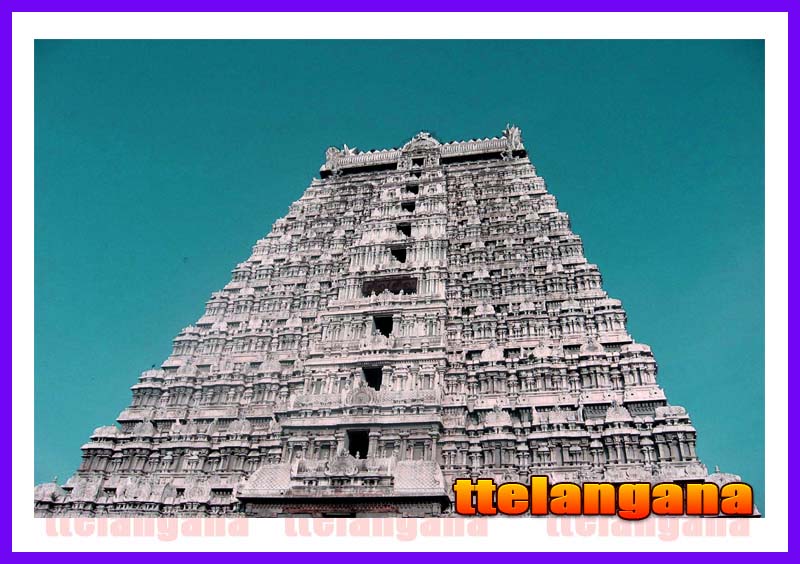Full Details Of Tiruvannamalai Temple
Annamalaiyar Temple | Tiruvannamalai Temple
Area/Village :- Tiruvannamalai
State :- Tamil Nadu
Country:- India
Nearest City/Town:- Thiruvannamalai
Best season to visit:- All
Languages:- Tamil & English
Temple Timings:- 5:30 AM to 12:30 PM and 3:30 PM to 9:30 PM
Photography:- Not allowed.
The Arunachaleswarar Temple, commonly known as the Tiruvannamalai Temple, is a famous Hindu temple dedicated to Lord Shiva. Located in the town of Tiruvannamalai in the state of Tamil Nadu, India, the temple is considered one of the largest and most ancient Shiva temples in the country. Spread over a vast area at the foot of the Annamalai Hill, the temple attracts millions of devotees and pilgrims every year. In this detailed description, we will explore various aspects of the Tiruvannamalai Temple, including its history, architecture, significance, festivals, and spiritual practices.
History:
The history of the Tiruvannamalai Temple dates back to ancient times and is closely associated with the sacred Annamalai Hill, which is considered a manifestation of Lord Shiva himself. The temple has undergone numerous renovations and expansions under different rulers and dynasties. It is believed that the Pallava kings, Chola kings, Pandya kings, and Vijayanagara rulers made significant contributions to the temple’s development.
Architecture:
The Tiruvannamalai Temple showcases magnificent Dravidian-style architecture, characterized by towering gopurams (gateway towers), mandapams (pillared halls), and intricate sculptures. The temple complex covers an extensive area of approximately 25 acres and is enclosed by massive fortified walls. The Rajagopuram, the main gateway tower, stands at an impressive height of around 217 feet and is adorned with detailed sculptures depicting various mythological stories.
The innermost sanctum of the temple houses the main deity, Lord Arunachaleswarar (another name for Lord Shiva), in the form of a lingam (a symbolic representation of Shiva). The sanctum is surrounded by several prakarams (enclosures) that lead to various shrines dedicated to other deities, including Goddess Parvati, Lord Ganesha, Lord Murugan, and Lord Chandikeswarar.
Significance:
The Tiruvannamalai Temple holds immense significance in Hindu mythology and spirituality. The Annamalai Hill, on which the temple is located, is considered a manifestation of Lord Shiva’s cosmic form. The temple is one of the Pancha Bhoota Stalams, representing the element of fire (Agni). Devotees believe that circumambulating the Annamalai Hill, known as Girivalam, carries great spiritual merit.
The temple is also associated with the ancient scripture, the Arunachala Purana, which narrates the divine glory of Annamalai Hill. It is believed that Lord Shiva appeared in the form of a massive column of fire, known as the Arunachala, to settle a dispute between Lord Brahma and Lord Vishnu.
Festivals and Celebrations:
The Tiruvannamalai Temple celebrates numerous festivals and religious events throughout the year. The most significant festival is the Karthigai Deepam, also known as the Festival of Lights, which attracts a massive gathering of devotees. During this festival, a gigantic lamp is lit atop Annamalai Hill, and the entire temple complex is beautifully illuminated.
Other major festivals celebrated at the Tiruvannamalai Temple include Mahashivaratri (the Night of Lord Shiva), Thai Poosam, Arudra Darshan, and Panguni Uthiram. These festivals witness elaborate rituals, processions, music, dance performances, and spiritual discourses, creating a vibrant atmosphere of devotion and celebration.
Spiritual Practices:
Apart from the regular worship and rituals, the Tiruvannamalai Temple offers various spiritual practices for devotees seeking spiritual growth and enlightenment. One of the prominent practices is Girivalam, the circumambulation of the Annamalai Hill, which is considered highly auspicious. Devotees undertake this sacred walk, covering a distance of approximately 14 kilometers, to seek the blessings of Lord Shiva and attain spiritual liberation.
The temple also offers meditation halls and ashrams where spiritual seekers can engage in meditation, yoga, and other contemplative practices. The serene ambiance and the divine energy of the temple premises provide an ideal environment for introspection and inner transformation.
How To Reach Tiruvannamalai Temple :
Tiruvannamalai is well-connected to major cities in Tamil Nadu and other parts of India, making it easily accessible for devotees and tourists. Here are the various modes of transportation to reach the Tiruvannamalai Temple:
By Air: The nearest airport to Tiruvannamalai is the Chennai International Airport, located approximately 185 kilometers away. From the airport, you can hire a taxi or take a bus to reach Tiruvannamalai. The journey by road takes around 4-5 hours, depending on the traffic and road conditions.
By Train: Tiruvannamalai has its railway station, which is well-connected to major cities like Chennai, Bangalore, and Coimbatore. Regular trains operate to and from Tiruvannamalai, making it convenient for travelers to reach the town. Once you reach the railway station, you can hire an auto-rickshaw or a taxi to reach the temple.
By Road: Tiruvannamalai has good road connectivity with nearby cities and towns. The town is located on State Highway 9 (SH-9), which connects it to major cities like Chennai, Bangalore, and Vellore. You can reach Tiruvannamalai by private car, taxi, or state-run buses that operate regular services from nearby towns and cities.
By Bus: Tiruvannamalai has a well-developed bus network, with regular bus services operating from Chennai, Bangalore, and other nearby cities. State-run and private buses ply to Tiruvannamalai, making it an affordable and convenient mode of transportation. You can board a bus from the nearest bus station in your city and alight at the Tiruvannamalai bus stand, which is located close to the temple.
Once you reach Tiruvannamalai, the temple is easily accessible as it is situated in the heart of the town. Local transportation options such as auto-rickshaws and cycle rickshaws are available to reach the temple from the railway station or bus stand.
It’s advisable to check the travel schedules, availability, and timings of various transportation modes beforehand to plan your journey efficiently.
Tags:tiruvannamalai temple,thiruvannamalai temple,tiruvannamalai,arunachalam temple,tiruvannamalai temple girivalam,tiruvannamalai temple history in telugu,annamalaiyar temple,thiruvannamalai temple tour,tiruvannamalai temple video,arunachalam temple history,thiruvannamalai temple history in tamil,thiruvannamalai temple history,history of thiruvannamalai temple,thiruvannamalai,tiruvannamalai girivalam,girivalam tiruvannamalai,arunachalam temple video
